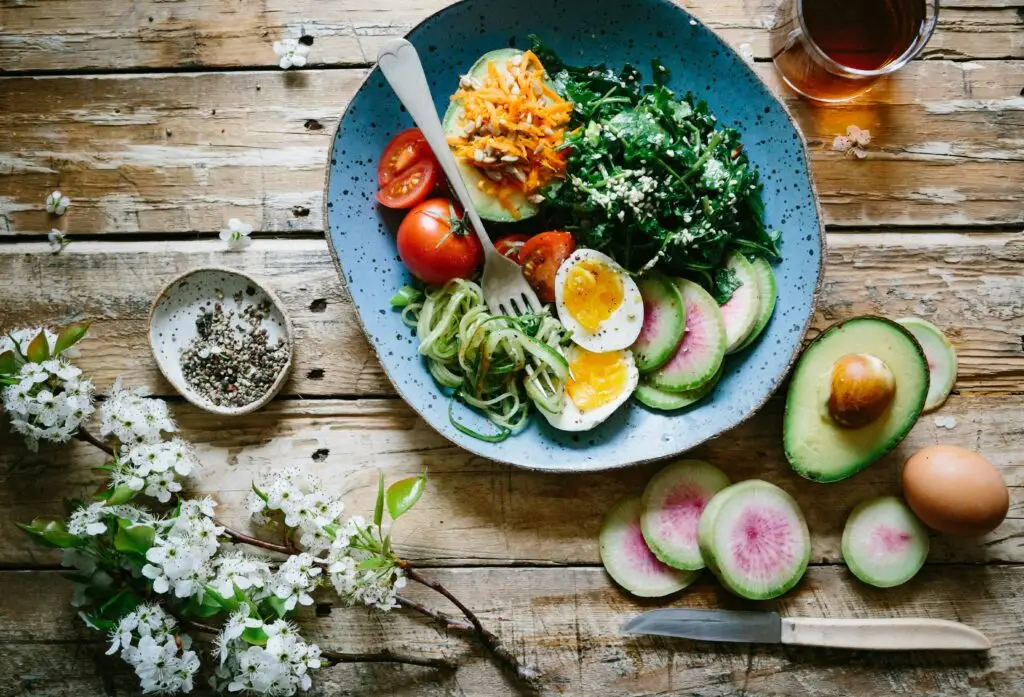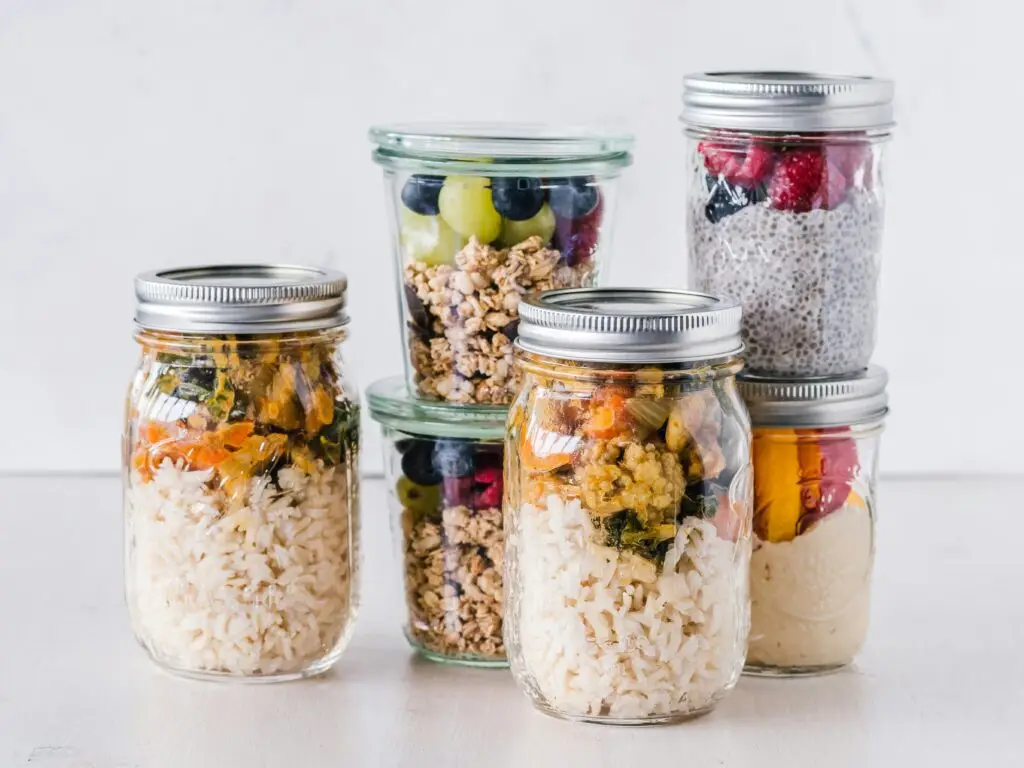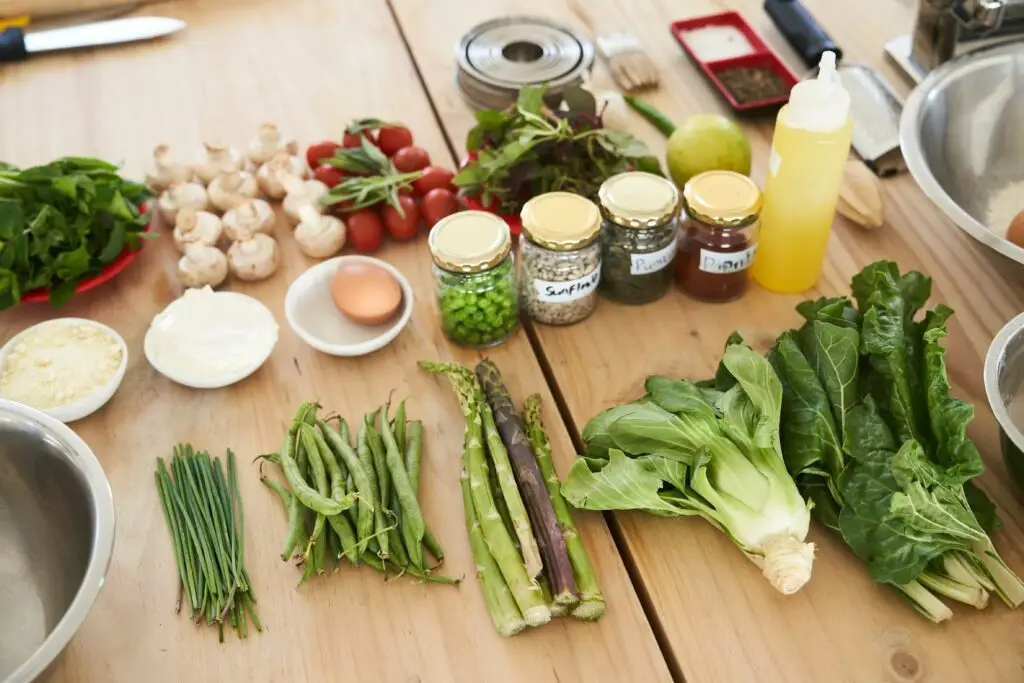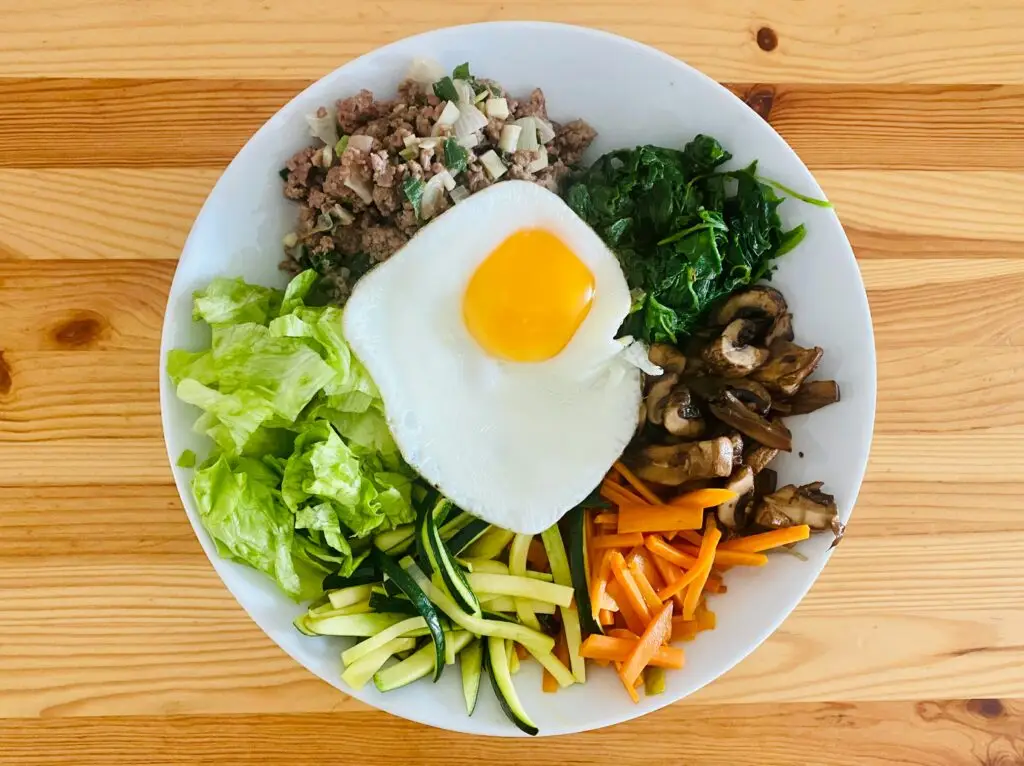Meal Prep Plan for Easy and Effective Weight Loss
Meal prep isn’t just a trend—it’s a proven strategy for achieving sustainable weight loss. By planning and preparing your meals in advance, you can take control of your nutrition, avoid unhealthy choices, and stay on track with your goals. In this guide, we’ll dive into the art of meal prep mastery, sharing tips, tricks, and tools to make it easy and effective. Plus, I’ll recommend some of my favorite products and supplements to support your journey.
1. Why Meal Prep Works for Weight Loss
Meal prepping has become a popular strategy for achieving weight loss and maintaining a healthy lifestyle. By planning and preparing your meals in advance, you gain control over your diet, reduce calorie intake, and avoid impulsive eating. Let’s dive into the science behind meal prepping and explore how it can help you reach your weight loss goals.
Meal Prepping for Weight Loss
Portion Control:
Meal prepping allows you to portion out your meals in advance, ensuring you eat the right amount of food. This helps prevent overeating, a common obstacle in weight loss journeys.Reduced Calorie Intake:
When you plan your meals, you’re more likely to make healthier choices and avoid high-calorie, processed foods. Studies show that people who meal prep consume fewer calories overall compared to those who don’t.Avoiding Impulsive Eating:
Having ready-to-eat meals on hand reduces the temptation to grab unhealthy snacks or order takeout. This is especially helpful during busy days when time and energy are limited.Improved Nutrient Intake:
Meal prepping encourages you to include a variety of nutrient-dense foods, such as lean proteins, whole grains, and vegetables, in your diet. This ensures your body gets the essential vitamins and minerals it needs to function optimally.Consistency and Accountability:
Planning your meals in advance helps you stay consistent with your eating habits, making it easier to stick to your weight loss goals. It also creates a sense of accountability, as you’re less likely to deviate from your plan when meals are already prepared.
How Meal Prepping Supports Weight Loss
Saves Time and Reduces Stress:
Meal prepping eliminates the daily hassle of deciding what to eat, saving you time and reducing decision fatigue. This makes it easier to stay on track with your weight loss goals.Encourages Healthier Choices:
When you plan your meals, you’re more likely to choose whole, unprocessed foods over convenience options. This shift toward healthier eating habits is key to sustainable weight loss.Helps Manage Cravings:
Having balanced meals and snacks readily available helps curb cravings and prevents you from reaching for unhealthy options.Promotes Mindful Eating:
Meal prepping encourages you to think about what you’re eating and why, fostering a more mindful approach to food. This can help you develop a healthier relationship with eating.

Benefits of Meal Prepping for Weight Loss
Better Portion Control: Pre-portioned meals help you avoid overeating.
Healthier Food Choices: Planning ahead reduces the temptation to choose unhealthy options.
Time Efficiency: Having meals ready saves time during busy weekdays.
Cost Savings: Meal prepping can reduce the need for expensive takeout or convenience foods.
Long-Term Success: Consistent meal prepping fosters sustainable eating habits that support weight loss and maintenance.
Common Mistakes to Avoid
Overcomplicating Recipes: Stick to simple, tried-and-true recipes to avoid burnout.
Skipping Variety: Eating the same meals every day can lead to boredom and cravings. Mix it up to stay motivated.
Ignoring Balance: Ensure your meals include a mix of protein, healthy fats, and complex carbs to keep you satisfied and energized.
Not Storing Food Properly: Use airtight containers and follow food safety guidelines to keep your meals fresh and safe to eat.
Pro Tip: If you’re new to meal prep, try a meal prep cookbook. These books provide easy recipes and step-by-step guides.
Supplement Suggestion: A multivitamin can help fill any nutritional gaps in your meal prep.
2. Plan Your Meals Like a Pro
Meal planning is a game-changer when it comes to maintaining a healthy diet and achieving your weight loss goals. By organizing your meals in advance, you ensure that healthy, nutritious options are always available, reducing the temptation to reach for fast food or unhealthy snacks. Let’s explore the science behind meal planning and provide practical tips to help you plan your meals like a pro.
Meal Planning
Reduces Impulsive Eating:
When you plan your meals, you’re less likely to make impulsive food choices. Having a clear plan eliminates the guesswork and helps you avoid last-minute decisions that often lead to unhealthy options.Promotes Healthier Choices:
Meal planning encourages you to include a variety of nutrient-dense foods, such as lean proteins, whole grains, fruits, and vegetables. This ensures your body gets the essential nutrients it needs to function optimally.Supports Portion Control:
Planning your meals in advance allows you to portion out your food, preventing overeating and helping you stay within your calorie goals.Saves Time and Money:
By planning your meals, you can create a shopping list and buy only what you need, reducing food waste and saving money. It also saves time during the week, as you won’t have to figure out what to cook each day.Encourages Consistency:
Meal planning helps you stay consistent with your eating habits, making it easier to stick to your health and weight loss goals.
How to Plan Your Meals Like a Pro
Set Aside Time for Planning:
Dedicate a specific time each week to plan your meals. This could be Sunday afternoon or any other day that works for you. Treat it as a non-negotiable appointment to stay consistent.Create a Balanced Menu:
Ensure your meal plan includes a mix of protein, healthy fats, and complex carbohydrates. Aim for variety to keep your meals interesting and nutritionally balanced.Make a Shopping List:
Once your meals are planned, create a detailed shopping list. Stick to the list to avoid impulse buys and ensure you have all the ingredients you need.Prep in Advance:
Spend some time prepping ingredients or even entire meals ahead of time. This could include washing and chopping vegetables, cooking grains, or marinating proteins.Use Portion-Controlled Containers:
Invest in quality containers to store your prepped meals. Portioning out your food in advance helps with portion control and makes it easy to grab and go.Incorporate Leftovers:
Plan for leftovers by cooking larger portions. This can save time and ensure you have healthy meals ready for the next day.Stay Flexible:
While it’s important to have a plan, allow for some flexibility. Life can be unpredictable, so be prepared to adjust your meal plan as needed.

Benefits of Meal Planning
Healthier Eating Habits: Planning ensures you have nutritious meals ready, reducing the temptation to choose unhealthy options.
Time Efficiency: Having a plan saves time during busy weekdays, as you won’t have to figure out what to cook each day.
Cost Savings: Meal planning reduces food waste and helps you stick to a budget.
Consistency: A well-thought-out meal plan helps you stay consistent with your health and weight loss goals.
Reduced Stress: Knowing what you’re going to eat eliminates the daily stress of meal decisions.
Common Mistakes to Avoid
Overcomplicating Recipes: Stick to simple, tried-and-true recipes to avoid burnout.
Skipping Variety: Eating the same meals every day can lead to boredom and cravings. Mix it up to stay motivated.
Ignoring Balance: Ensure your meals include a mix of protein, healthy fats, and complex carbs to keep you satisfied and energized.
Not Storing Food Properly: Use airtight containers and follow food safety guidelines to keep your meals fresh and safe to eat.
Pro Tip: Use a meal planning app to streamline the process. These apps help you organize recipes, create shopping lists, and track your progress.
Supplement Suggestion: A greens powder can help you add extra nutrients to your meals effortlessly.
3. Invest in Quality Meal Prep Containers
When it comes to meal prepping, having the right tools is just as important as the food itself. Quality meal prep containers play a crucial role in keeping your meals fresh, organized, and portable, making it easier to stick to your plan and achieve your health goals. Let’s explore the science behind investing in quality containers and provide practical tips to help you choose the best ones for your needs.
Meal Prep Containers
Preserves Freshness:
High-quality containers are designed to keep your meals fresh by preventing air and moisture from entering. This helps maintain the taste, texture, and nutritional value of your food.Prevents Leaks and Spills:
Durable, well-sealed containers prevent leaks and spills, ensuring your meals stay intact and mess-free, whether you’re at home, work, or on the go.Supports Portion Control:
Many meal prep containers come with compartments or portion-controlled sections, making it easier to manage portion sizes and stick to your calorie goals.Encourages Consistency:
Having reliable containers makes meal prepping more convenient and enjoyable, increasing the likelihood that you’ll stick to your plan consistently.Reduces Waste:
Investing in reusable, high-quality containers reduces the need for disposable packaging, contributing to a more sustainable lifestyle.
How to Choose the Best Meal Prep Containers
Material Matters:
Glass: Durable, non-toxic, and microwave-safe. Glass containers are ideal for reheating meals and are easy to clean.
BPA-Free Plastic: Lightweight and portable, BPA-free plastic containers are a convenient option for on-the-go meals. Look for dishwasher-safe varieties for easy cleaning.
Stainless Steel: Eco-friendly and durable, stainless steel containers are perfect for cold meals and snacks. They are not microwave-safe but are great for keeping food fresh.
Size and Compartments:
Choose containers in various sizes to accommodate different meal types, from snacks to full meals. Containers with compartments are great for keeping foods separate and organized.Lid Design:
Look for containers with secure, leak-proof lids to prevent spills and keep your meals fresh. Snap-on lids with silicone seals are particularly effective.Stackability:
Stackable containers save space in your fridge, freezer, or bag, making meal prep and storage more efficient.Ease of Cleaning:
Opt for dishwasher-safe containers to simplify cleanup. Containers with smooth interiors and no hard-to-reach corners are easier to clean by hand as well.Portability:
If you’re often on the go, choose lightweight, compact containers that fit easily in your bag or lunchbox.

Benefits of Quality Meal Prep Containers
Keeps Food Fresh: High-quality containers preserve the taste, texture, and nutritional value of your meals.
Prevents Mess: Leak-proof designs ensure your meals stay intact and mess-free.
Supports Portion Control: Compartmentalized containers help you manage portion sizes and stick to your goals.
Saves Time and Money: Reusable containers reduce the need for disposable packaging and make meal prep more efficient.
Encourages Consistency: Reliable containers make meal prepping convenient, helping you stay on track with your plan.
Common Mistakes to Avoid
Choosing the Wrong Size: Containers that are too large or too small can make meal prep inefficient. Select sizes that match your portion needs.
Ignoring Durability: Flimsy containers may crack or break, leading to leaks and wasted food. Invest in durable options that last.
Overlooking Lid Quality: Poorly designed lids can lead to spills and leaks. Ensure lids are secure and easy to use.
Neglecting Cleaning Instructions: Some containers are not dishwasher-safe or require specific cleaning methods. Follow the manufacturer’s guidelines to maintain their quality.
Pro Tip: If you’re looking for durable and eco-friendly options, try glass meal prep containers. They’re perfect for reheating and reducing plastic waste.
Supplement Suggestion: A portion control plate can help you visualize proper serving sizes.
4. Batch Cook for Efficiency
Batch cooking is a game-changer for anyone looking to save time, reduce food waste, and maintain a healthy diet. By preparing large quantities of meals at once, you ensure that nutritious, home-cooked food is always available, even on your busiest days. Let’s explore the science behind batch cooking and provide practical tips to help you master this efficient meal prep strategy.
Batch Cooking
Time Efficiency:
Batch cooking allows you to prepare multiple meals in one cooking session, saving you time throughout the week. This is especially beneficial for busy individuals who want to eat healthy without spending hours in the kitchen every day.Reduces Food Waste:
By planning and cooking in bulk, you can use ingredients more efficiently, reducing the likelihood of food spoilage. This not only saves money but also contributes to a more sustainable lifestyle.Promotes Healthier Eating:
Having pre-prepared meals on hand makes it easier to avoid unhealthy convenience foods. Studies show that people who plan and prepare their meals are more likely to eat a balanced diet and maintain a healthy weight.Supports Portion Control:
Batch cooking allows you to portion out meals in advance, helping you manage portion sizes and avoid overeating.Encourages Consistency:
With ready-to-eat meals available, you’re more likely to stick to your health and weight loss goals, even on hectic days.
How to Batch Cook Like a Pro
Plan Your Meals:
Start by deciding which meals you want to prepare. Focus on recipes that are easy to scale up and store well, such as soups, stews, casseroles, and grain bowls.Create a Shopping List:
Once your meals are planned, make a detailed shopping list. Buy ingredients in bulk to save money and ensure you have everything you need.Choose the Right Recipes:
Opt for recipes that use overlapping ingredients to maximize efficiency. For example, roasted vegetables can be used in salads, grain bowls, and soups.Set Aside Time for Cooking:
Dedicate a few hours on a weekend or a free day to batch cooking. Treat it as a non-negotiable appointment to stay consistent.Use Quality Storage Containers:
Invest in durable, airtight containers to store your meals. Portion out meals in advance to make it easy to grab and go.Label and Organize:
Label your containers with the contents and date of preparation. Organize them by meal type (breakfast, lunch, dinner, snacks) to make it easy to find what you need.Incorporate Variety:
While batch cooking, prepare a variety of meals to keep your diet interesting and nutritionally balanced.

Benefits of Batch Cooking
Saves Time: Preparing multiple meals at once reduces daily cooking time.
Reduces Food Waste: Efficient use of ingredients minimizes spoilage and waste.
Promotes Healthier Eating: Having ready-to-eat meals encourages healthier choices.
Supports Portion Control: Pre-portioned meals help manage portion sizes.
Encourages Consistency: Ready-to-eat meals make it easier to stick to your health goals.
Common Mistakes to Avoid
Overcomplicating Recipes: Stick to simple, tried-and-true recipes to avoid burnout.
Ignoring Storage Guidelines: Follow proper storage guidelines to keep your meals fresh and safe to eat.
Skipping Variety: Eating the same meals every day can lead to boredom and cravings. Mix it up to stay motivated.
Not Labeling Containers: Labeling helps you keep track of what’s inside and ensures you use meals before they spoil.
Pro Tip: If you’re short on time, try a slow cooker. It’s perfect for batch cooking with minimal effort.
Supplement Suggestion: A protein powder can help you add extra protein to your meals or snacks.
5. Keep It Simple and Sustainable
Meal prepping is a powerful tool for maintaining a healthy diet, saving time, and achieving your health goals. However, overcomplicating the process can lead to burnout, making it difficult to stick with it long-term. By keeping your meal prep simple and sustainable, you can create a routine that fits seamlessly into your lifestyle and supports your well-being. Let’s explore the science behind simplicity in meal prep and provide practical tips to help you maintain a sustainable approach.
Keeping It Simple
Reduces Decision Fatigue:
Simplifying your meal prep routine minimizes the number of decisions you need to make, reducing mental fatigue and making it easier to stay consistent.Encourages Consistency:
A straightforward meal prep plan is easier to follow, increasing the likelihood that you’ll stick with it long-term. Consistency is key to achieving and maintaining your health goals.Prevents Burnout:
Overcomplicating meal prep with elaborate recipes and time-consuming techniques can lead to burnout. Keeping it simple ensures that meal prep remains enjoyable and manageable.Supports Healthy Habits:
Simple meal prep focuses on whole, nutrient-dense foods, promoting healthier eating habits without the need for complex recipes or exotic ingredients.Saves Time and Energy:
A streamlined meal prep process saves time and energy, making it easier to incorporate into your busy schedule.
How to Keep Meal Prep Simple and Sustainable
Focus on Staples:
Build your meals around simple, versatile staples like grains, proteins, and vegetables. These can be mixed and matched to create a variety of meals throughout the week.Choose Easy Recipes:
Opt for recipes with minimal ingredients and steps. One-pot meals, sheet pan dinners, and slow cooker recipes are great options for simple meal prep.Prep Ingredients, Not Meals:
Instead of preparing full meals, consider prepping individual components like chopped vegetables, cooked grains, and grilled proteins. This allows for more flexibility and creativity during the week.Use Repeat Meals:
Don’t be afraid to repeat meals throughout the week. Eating the same breakfast, lunch, or dinner multiple times can simplify your meal prep and reduce decision fatigue.Set a Routine:
Dedicate a specific time each week for meal prep, such as Sunday afternoon. Treat it as a non-negotiable appointment to stay consistent.Invest in Quality Tools:
Use quality containers, sharp knives, and efficient kitchen tools to make meal prep easier and more enjoyable.Keep a Well-Stocked Pantry:
Maintain a pantry stocked with essential items like canned beans, whole grains, spices, and healthy oils. This ensures you always have the basics on hand to whip up a quick meal.

Benefits of Simple and Sustainable Meal Prep
Reduces Stress: A straightforward meal prep routine minimizes stress and makes healthy eating more accessible.
Saves Time: Simple meal prep saves time, allowing you to focus on other priorities.
Promotes Consistency: An easy-to-follow plan increases the likelihood that you’ll stick with it long-term.
Encourages Healthy Eating: Focusing on whole, nutrient-dense foods supports overall health and well-being.
Prevents Burnout: Keeping meal prep simple ensures it remains enjoyable and sustainable.
Common Mistakes to Avoid
Overcomplicating Recipes: Stick to simple, tried-and-true recipes to avoid burnout.
Ignoring Your Preferences: Choose recipes and ingredients you enjoy to make meal prep more enjoyable.
Skipping Variety: While simplicity is key, incorporating some variety prevents boredom and keeps your meals interesting.
Neglecting Storage Guidelines: Follow proper storage guidelines to keep your meals fresh and safe to eat.
Pro Tip: If you’re looking for quick and easy recipes, try a meal prep recipe kit. These kits provide pre-portioned ingredients and step-by-step instructions.
Supplement Suggestion: A digestive enzyme supplement can help your body absorb nutrients more effectively.
Conclusion
Meal prep is a game-changer for sustainable weight loss. By planning your meals, investing in the right tools, and keeping it simple, you can take control of your nutrition and achieve your goals. Remember, consistency is key—start small, stay organized, and watch your progress soar!
Product Recommendations
Here are some of my top picks to help you master meal prep:
- Meal Prep Cookbook: Perfect for beginners with easy recipes.
- Glass Meal Prep Containers: Durable and eco-friendly.
- Slow Cooker: Ideal for batch cooking with minimal effort.
- Meal Prep Recipe Kit: Quick and easy recipes with pre-portioned ingredients.
- Portion Control Plate: Helps you visualize proper serving sizes.
Disclaimer
Some of the links in this post are affiliate links, which means I may earn a small commission if you purchase through them. This comes at no extra cost to you and helps support the creation of free, valuable content like this. Thank you for your support!
